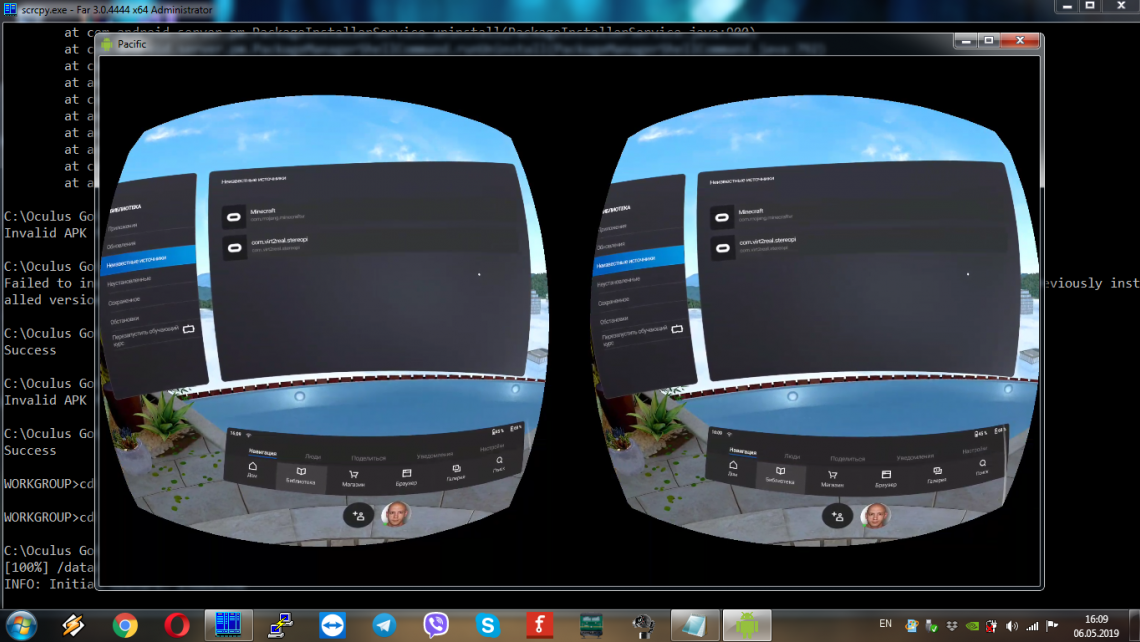


The Stereo panorama is a two such an images stitched together horizontally, so stereo images should be 1:1 aspect ratio, that is, from our example, 4096px x 4096px. Usual equirectangular mono panorama image is 2:1 aspect ratio image. To get properly look 360° stereo panorama, you have to use single Equirectangular Stacked (over/under) Stereo Image combined from two mono panoramas in any of supported image file format. 360° Stereoscopic Panorama Stereoscopic Panoramic Image Format This way, by combining of two highly specialized online tools to achieve one goal, you will be able to fine-tune panorama image to get best possible results. Then come back here and use that converted PNG or JPEG version of your 32-bit image as panorama.Ī very simple extra step that especially makes sense if you HDR panoramic image requires pre-exposure adjustment. So, to view HDR images as panoramas, all you need to do is go to Online HDR Image Viewer page, open your 32-bit image there, and save (convert) it to any 8-bit format, such as PNG or JPEG. This tool can view HDR & EXR files, adjust their exposure and, what is more important in this case, converts them into various 8-bit image formats, which, in turn, are directly supported by Online 360 °Panorama Viewer. HDR Panoramic ImagesĪlthough Online 360 °Panorama Viewer does not directly support 32-bit HDR panoramic images, it is very easy to solve with Online HDR Image Viewer | Image Format Converter. A delay in loading larger files will be pretty noticeable even on powerful desktops. It is recommended to use files smaller than 100 MB. Additional time directly depends on the size of a file, a resolution of an image in it and from performance of your hardware. Simply put, TIFF files take longer to load in panorama app. In other words, reading non-web data requires additional transformation, from non-web image to a web image, that in turn consumes additional computing resources. Only then, assembled web-compatible image eventually can be used "as is". Decodes them there, extracting RGB pixel data, and then assemble it into a web-compatible image. In particular, it reads a file as abstract bytes into memory. To load *.tif / *.tiff files, this program does a trick. That is, it is not intended for viewing on the Internet by design, so it can not be just loaded as is, as in the case of web formats described above.
Stereoscopic 3d player client zip#
None-Web Image FormatsĬurrently, supported widely used 8bit and 16bit TIFF files with LZW, ZIP & JPEG image compression.īy "non-web format" means that this format is NOT supported by any major browser, so to speak, formats that are not native to the browser. Video files in any format are not currently supported, but this feature is already on the roadmap of future enhancements. * GIF and APNG images will always display only a first frame, but will not play animation. These are: JPEG, PNG, WEBP, AVIF, SVG, BMP, GIF* and APNG*. Panorama Viewer supports images in all common web formats in 8bit and 16bit. Just search for something like "360 degree photography", "how to shoot 360° panoramas", "Google Cardboard" or "Google VR" and you quickly understand what it is. There are plenty tutorials and videos on the web about it.
Stereoscopic 3d player client how to#
It's really not as complicated as it sounds at first.Īnyway, if you are a CG Artist and are not yet familiar with this concept or may want to know how to render equirectangular panorama images in 3D, we have a special tutorial on this subject - Rendering 360° Panorama Complete Guide.įor everyone else, you'd better to see how a professional photographers make immersive panoramas. Long story short, it is a projection of the environment on a sphere unwrapped into a rectangular map with a strict aspect ratio of 2:1. These can be panoramic photos taken from the photosphere, or panorama images generated by CG. Technically, you can use any "flat" image in supported formats (see below), however, to have panorama that looks right, it must be a high-resolution equirectangular projection image. In case if you want to change panoramic image, you don't need to refresh this page, just add another image as before, and current panoramic image will be replaced with a new one. Then return to this page and press Ctrl+V on your keyboard to paste an image data into the panorama viewer from the clipboard.Īfter adding an image to the panorama viewer, it automatically generates a ready-to-use interactive panorama in seconds.Īnd that's it, now you have your panorama interactive. Navigate to the program of your choice and copy an image data to the clipboard. Drag and Drop an image file from any file manager directly into the viewport of panorama viewer.


 0 kommentar(er)
0 kommentar(er)
